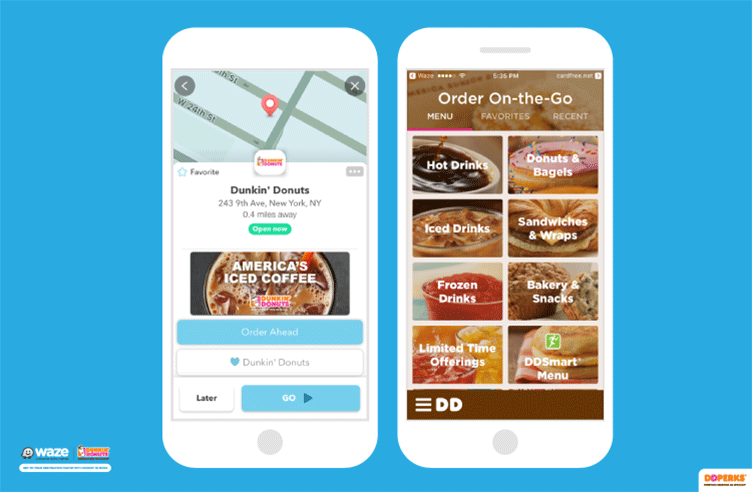We’re all familiar with zero-party data, first-party data, and even third-party data. What we’ve skipped over, however, is second-party data. Second-party data, according to Digiday, is “data that a user hasn’t shared with you directly, but you’re able to legally access via a direct relationship with another business or through a private marketplace run by a media owner.”
We always talk about the customer-brand relationship and rarely the brand-brand relationship, but clearly, there are some benefits to collaborating with similar organizations. Take Dick’s Sporting Goods and Nike, for example. In November of last year, they combined their loyalty programs. Customers could then shop for exclusive Nike products and Dick’s products via one portal. Nike wants to reach Dick’s customers, who are in the market for footwear, and Dick’s wants to honor the relationship they have with one of their largest brands.Through this partnership, both brands are looking to better understand customer preferences.
While there are upsides to creating partnerships, what’s curious is the sudden uptick in the desire for second-party data. What’s causing this increase in brand partnerships?
Why Second-Party Data Is Gaining Popularity
When one door closes, another opens. According to Marketing Dive, “25% of businesses view second-party partnerships as their top priority, while nearly half (49%) said it was a high priority.” No, brand partnerships aren’t new, but second-party data is finally having its time in the spotlight—thanks to the soon-to-be-deprecated third-party cookies.
Privacy is taking a front seat in the customer experience and, by removing third-party cookies from Chrome, Google is forcing marketers to become a bit more creative in how they connect and communicate with their audiences.
In addition to serving as a solution for the death of third-party cookies, second-party data adds a surprising element of personalization to the customer experience. Customers now expect brands to know who they are and what they like. So, if multiple brands are getting together and discussing what works best for their customers, sharing information, and figuring out how to market to them in a way that’s most impactful, it’s going to add a level of customization to the overall customer experience.
As ClickZ says, “Data teams can mix and match second-party data in ways that best suit their needs, no matter the vertical because it can be delivered through marketplaces in unstructured form. This way data teams can mold it to apply to the unique purposes of each brand.”
Fueling a Personalized Customer Experience
As an example, let’s take a look at Dunkin’ and Waze. Waze, the navigation app, had customer location information, something Dunkin’, a coffee chain, may not have access to. Waze needs customers to share their location to effectively use their app, while using the Dunkin’ app doesn’t require location-sharing.


Dunkin’ and Waze shared second-party data to provide a seamless experience to their audiences. Source: Data Axle.
However, Dunkin’ and Waze partnered and exchanged customer information to provide a one-of-a-kind user experience, showing those users on Waze where the nearest Dunkin’ location is and even allowing them to order ahead through the Waze app. A match made in heaven.
How to Pick the Right Partner
There are obvious benefits to partnering with a brand—access to more customer data, new channels to reach audiences, etc.—but it requires more than just putting brands you like into a hat and picking a partner. It’s important to consider the “who,” “what,” “why,” and “how” when it comes to establishing a partnership.
Who Are You Trying to Reach?
Partnering with another brand hinges on having similar audiences. Trying to cast a wide net to appeal to a huge combined, dissimilar audience will come across as inauthentic. Combining two totally different audiences doesn’t mean you’ll capture more attention. In fact, you’ll likely end up alienating the majority.
Take Apple and U2 for example. The duo started off okay with their famous 2004 “Vertigo” commercial, but then tanked in 2014 when they provided the entire Apple audience with a free U2 album, automatically downloaded on their devices. Yes, people who like music may like U2, but not everyone who likes music likes them or wants their entire album. People felt the free “gift” was an intrusion and the antithesis of personalization. It’s the equivalent of sending a batch-and-blast email to everyone, without any segmentation. This partnership put the “no” in “Bono.”
What Are You Aiming to Learn?
Next, you have to think about what information the brand partnership will provide. You’re looking for more audience data, but what kind of data? Power Digital Marketing says, “second-party data is like a networking event filled with all of the right people. By attending this party, you can mingle with everyone you’ve been dying to connect with and accelerate your business growth as a result.”
Pottery Barn and Sherwin-Williams developed a highly successful partnership because the data they each were looking for could be provided by the other. Pottery Barn, a home furnishing brand, and Sherwin-Williams, a paint brand, go hand-in-hand. Customers who are looking to re-do a room will likely be looking for new furniture and new paint, so why not share that information. By creating Sherwin-Williams palettes that pair with Pottery Barn furniture, the two brands were able to tap into customer preferences and needs.
Why Do You Want the Data and How Will You Use It?
Getting the data is one thing, using it is another. Both your brand and your partner brand have to plan how the shared data will be used to benefit each of you. Taking advantage of each brands’ strengths can not only provide the individual brands with vital information that can be implemented in each brands’ marketing strategies, but it can also actually lead to new product development. According to Visual Objects, “Most consumers (71%) enjoy it when companies offer co-branded products, which encourages businesses to give partnerships a try.”
Postmates and TikTok is an example of a successful partnership that resulted in a product that plays to each brands’ strengths: “TikTok Treats.” Postmates, a food delivery company, wanted to take advantage of the food videos TikTok’s audience deemed viral and bring them into reality. TikTok, a social media app, doesn’t have a physical channel, but through Postmates was able to go beyond the screen and connect with their audiences IRL.
Second-Party Data as a New Personalization Tool
Brand partnerships can be highly beneficial. Now, we’re not saying go knock on your direct competitors’ doors in the hopes they’ll share customer data—that’s not gonna work. But, you can think strategically about brands that pair well with your mission or brands that have similar audiences to create curated experiences. At the end of the day, a personalized experience is what customers are really looking for from their brand relationships.
To learn more about creating a personalized customer experience, download Personalization for Dummies.































